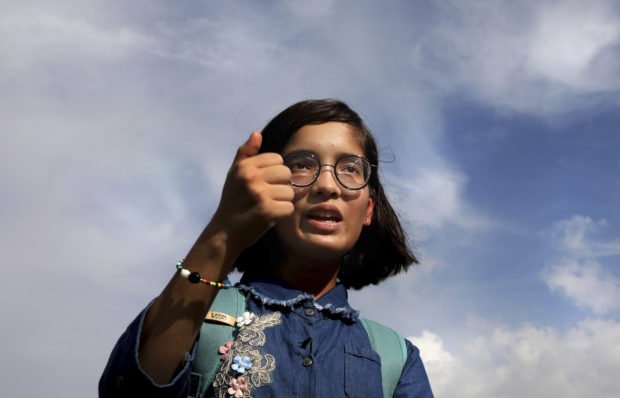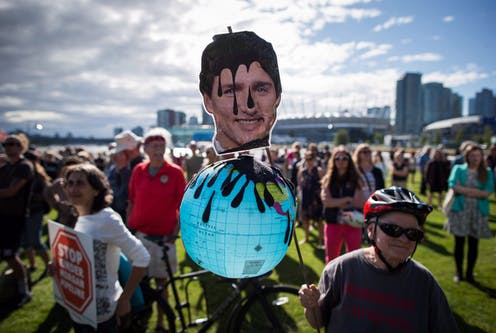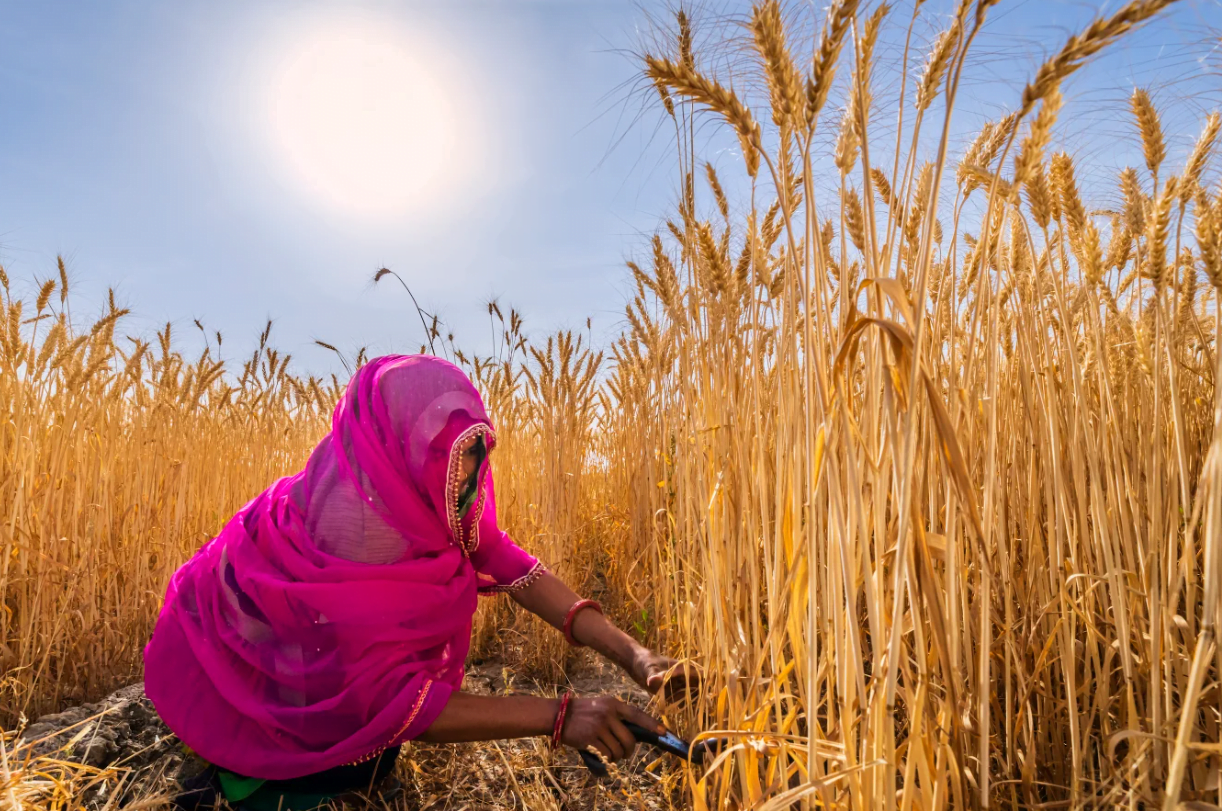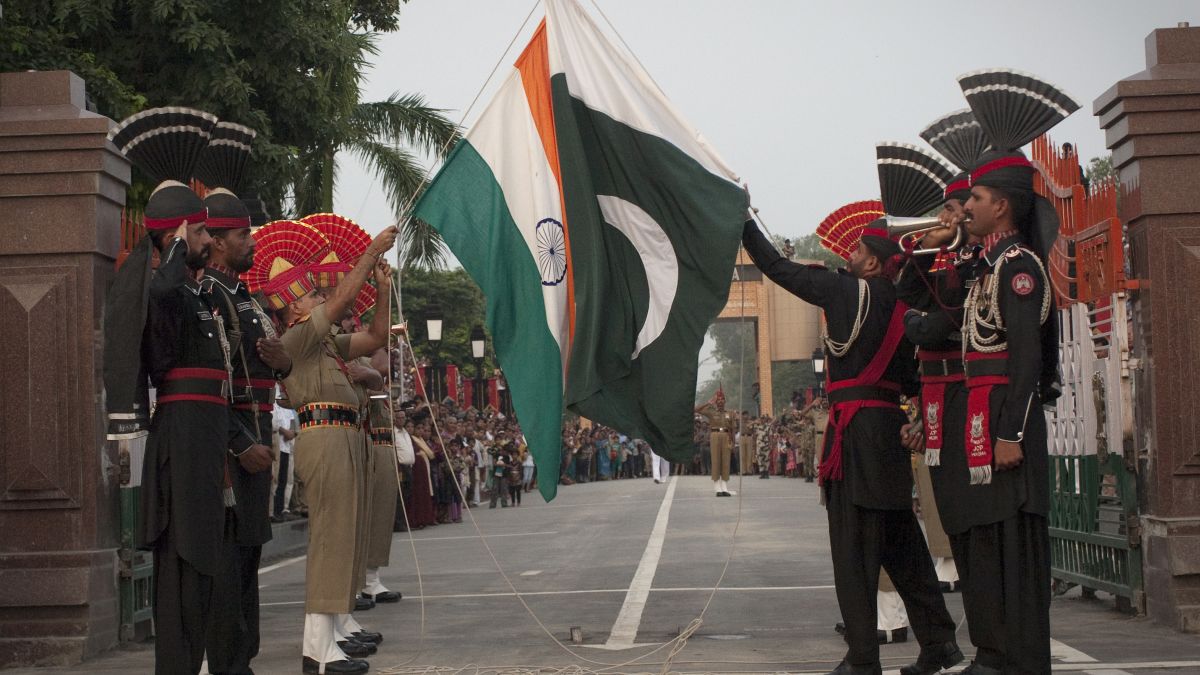On September 27th, Canadian Prime Minister Justin Trudeau tweeted a photograph of himself at the Climate Change march, captioned, “Today we marched for our planet, for our kids, and for their future“. What is ironic about this tweet is the fact that Greta Thunberg’s Fridays for Future campaign is aimed at pressuring leaders of countries to introduce policies that work towards environmental sustainability. Trudeau, as well as the majority of people who attend these marches, seem to completely misunderstand the purpose of these marches.
While Trudeau may wish to project an image of himself as liberal saviour, his participation in the march was nothing but a PR stunt. He has often talked about how climate change is one of the core issues of focus for his administration, announced environmental-protection measures and promised to ban single-use plastic by 2021. However, his recent actions have been completely counter to his promises, an example of which is the controversial expansion project of the Trans Mountain Pipeline. One of the resultant effects of this expansion is the increase in transporting of crude oil. It is important to remember that the oil and gas sector is one of the largest man-made emission sources of methane and has been held responsible, to a large degree, for contributing to global warming.
Another looming problem that comes alongside the pipeline expansion is the way it affects the indigenous people of Canada, whose treatment has always been far from humane. Khelsilem, a councillor for Squamish Nation, the indigenous people of British Columbia and Canada, in an article for The Guardian, writes, “A single oil spill could destroy Squamish territory, and no one can guarantee it won’t happen”. In the article, he also states that, “of the 117 indigenous groups who were a part of the consultation by the government, nearly two-thirds did not agree”. This move is thus a direct violation of the wishes of the indigenous people of Canada.
The Trans Mountain Pipeline is an example of the fact that it is impossible to address the issue of climate change without addressing the larger issue of capitalism and the complete disregard for marginalised communities which are worst affected by both global warming as well as the insatiable oil industry.
Trudeau, as well as those in India who associate themselves with ‘Fridays for Future’ and ‘Extinction Rebellion’ while at the same time support harmful state practises need to realise that marching on streets with banners, is not going to bring down the global temperature – radically reforming national policies and re-evaluating state priorities will.
A similar issue has risen, much closer to home – that of Aarey Forest. On 4th October 2019, the Bombay High Court said that Aarey was not a forest and thus ratified the cutting down of more than 2,600 trees for building the car shed for Mumbai Metro. Within a few hours of this order, the Mumbai Metro Rail Corporation began the cutting down of as many as 1000 trees (numbers disputed). Prakash Javedkar, the Union Environment Minister, defended this move as something necessary for the ‘development’ of Mumbai. Giving the example of Delhi Metro he stated that, “metro has planted 5 trees for every single tree that it has taken down”. What the minister does not recognise is the fact that the Aarey colony houses the Warli Adivasi tribe. Close to 10,000 Adivasis reside in the area; the forest is their ancestral property.
The government, however, does not recognise this land as belonging to the Warlis because they are unable to show proof that they have resided there for more than 50 years. When the Warlis settled in the area there was no system of documentation, as a result, the Aarey forest has never been legally accepted as the land of the Warlis.
Trudeau, as well as those in India who associate themselves with ‘Fridays for Future’ and ‘Extinction Rebellion’ while at the same time support harmful state practises need to realise that marching on streets with banners, is not going to bring down the global temperature – radically reforming national policies and re-evaluating state priorities will. And for this radical restructuring to take places, those people whose privileges are a direct result of capitalism, colonialism and white supremacy will be effected.
Climate Change and global warming cannot be successfully combatted if the world continues to look at sustainability through the lens of western ideas and interventions. People forcefully propagating the ideas of veganism and sustainable clothing is commonplace in the movement; while the former tends to be classist, casteist and islamophobic, the latter often caters only to economically well off and those with thin privilege.
A less visible but crucial example of the climate change movement being whitewashed is how international (predominantly western) media and organisations have contributed to the image of Greta Thunberg. While Greta herself recognises and is sensitive towards marginalised communities and activists, her global image is constructed in a manner that it hijacks the radical, climate activists who happen to be African, African-American, Indigenous, etc. These activists have been protesting against capitalism and its harmful effects on their native land for decades but have been systematically sidelined and ignored by international media because their narratives directly oppose colonisation.
The urgency of the Climate Change movement that has developed in recent years is a consequence of the fact that those with class, race and caste privilege are now being directly affected. For instance, Indians have increasingly recognised the fact that the country is facing an impending water crisis. The problem, however, is the fact that the “country” had been facing drought for more than a decade, which has caused nearly 300,000 Indian farmers to commit suicide in the past 25 years; the crisis is only being accepted now that big metropolitan cities like Chennai, Delhi and Bengaluru are affected.
While Greta Thunberg is undoubtedly inspirational and has motivated thousands of people to learn more about the climate crisis, here are some activists from different marginalised communities across the world whose efforts deserve to be recognised by us:
The problem, however, is the fact that the “country” had been facing drought for more than a decade, which has caused nearly 300,000 Indian farmers to commit suicide in the past 25 years; the crisis is only being accepted now that big metropolitan cities like Chennai, Delhi and Bengaluru are affected.
1. Autumn Peltier

Autumn is a 15-year-old from the Wikwemikong First Nation, northern Ontario. She is an official “water protector” and has been advocating for universal clean drinking water since the age of 8. She was nominated for the Children’s International Peace Prize in 2017 and in 2018 addressed the UNGA in New York on water rights.
She is the Chief Water Commissioner for Anishinabek Nation which is a union of Ontario Indians and a political advocate for 40 member First Nations. She has spoken about how, in her community, children are taught from a young age – their responsibilities to protect water. Autumn’s aunt, Josephine Henrietta Mandamin was also a water rights activist and in 2003 walked the entire shoreline of the Great Lakes, over 15,000 miles, to advocate for clean water.
In 2016, Autumn met Canadian PM and publicly told him, “I am very unhappy with the choices you’ve made”, referring to his support for the pipeline expansion.
2. Hindou Oumarou Ibrahim

Ibrahim is a 33-year-old from the Mbororo pastoralist community of Chad. She is the coordinator of the Association of Peul Women and Autochthonous Peoples of Chad (AFPAT) and co-director of the pavilion of the World Indigenous Peoples’ Initiative and Pavilion. She advocates indigenous knowledge being combined with climate science. In 2017, she addressed ‘Rising Voices: Collaborative Science with Indigenous Knowledge for Climate Solutions’ conference in Colorado
In an interview with Landscape News, she said, “When we protect land and resources, it involves a fight against big companies and governments who want to extract the natural resources for their economic benefit and who don’t think about the future of our planet.”
3. Isra Hirsi

Isra, 16, is a climate activist as well as a member of the Black Lives Matter Movement. She is the daughter of Congresswoman Ilhan Omar. Isra’s activism recognises the fact that climate change disproportionately affects people of colour. For example, Black people are twice as likely to die during a heatwave in Los Angeles as a result of segregation and poverty.
She has talked about the lack of intersectionality in the Climate Change movement in America, which is predominantly white and middle class. About the movement she said, “[They’re] talking about how much they love grass and their lakes—I can’t connect with you on that… so it’s a subtle ‘we don’t want you here’ because they talk about things, knowing people like me can’t relate.”
Isra Hiris is an inspirational teenager, she not only grapples with the ‘normal’ backlash and hate that climate activists get but also deals with racism and Islamophobia as a result of her identity and the fact that her mother is one of the first Muslim-American congresswomen in the extremely polarised political atmosphere of USA.
4. Tibetan Activists In India

Numerous Tibetan refugees who live in India have joined the Climate Change movement and have spoken out about how Tibet is subject to not just political problems but also environmental ones. Tibet consists of 46,000 glaciers and is the source of water to nearly 10 other countries. However, the glaciers and the land as a whole is endangered by the rapid industrialisation and commercialisation by the Chinese government.
Tibetans have been concerned for years, by the mining projects initiated by the Chinese in Tibetan grasslands which the people consider sacred. They believe that it will not only create environmental pollution but also negatively impact the indigenous herders of the area. Resultant mine leaks in the region have poisoned rivers and killed fish.
Protests in the region have received severe backlash, often violence by the police; many have been arrested.
5. Ridhima Pandey

Ridhima is an 11-year-old from Uttrakhand who filed a petition in 2017 at the National Green Tribunal for not taking satisfactory steps to combat climate change. The case was later sent to the Supreme Court of India. She was one of the 16 youth activists who attended the United Nations Climate Action Summit, this year.
She has advocated the cleaning up of Ganga and India’s continued dependence on fossil fuels. In an interview, she stated, “I don’t want to suffer, because it’s our right to have cleaner water, to live in a healthy environment, to have cleaner air,” she said. “And (the governments around the world) are violating our rights.“
References
- Justin Trudeau promised to protect indigenous rights. He lied, again
- 10,000 Adivasi Lives Don’t Matter – Let The Maharashtra Govt. Tell You How
- ‘Aarey is not a forest,’ says Bombay High Court
- Union Environment Minister Prakash Javadekar backs cutting of trees at Aarey forest
- A conversation with Mbororo advocate Hindou Oumarou Ibrahim: ‘We need sustainable sharing
- Meet India’s teen climate advocate: Ridhima Pandey
- Tibetans in India Join the Global Climate Strikes to Bring Attention to Their Burning Homeland
- Isra Hirsi Is 16, Unbothered, and Saving the Planet
Featured Image Source: The Conversation




